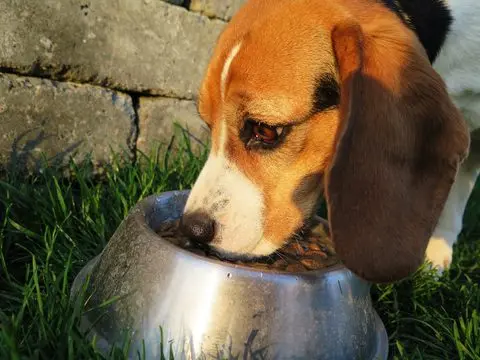One of the pivotal factors that have an impact on the environment is food production as it is responsible for approximately one-quarter of it. Thus, its sustainability should not be overlooked. Moreover, there is an increase in companion animals– precisely dogs and cats. This only means that there is a chunk of ingredients used for pet food that has a higher environmental impact. According to a study in Nature journal, wet diets which are meat rich are responsible for the highest impact and dry diets were the ones that least impacted the environment. As per the study, it is a positive correlation between the metabolizable energy provided by animal ingredients and the environmental impact. Thus, it is necessary to keep in mind the environmental impact of pet food.
With the world becoming environmentally conscious, the concept of taking care of an individual’s carbon footprint has become rather essential. A carbon footprint is the total amount of greenhouse gasses including carbon dioxide and methane released into the atmosphere. The carbon footprint depends on several factors including the activities of a particular individual, organization or community. Similarly, like humans, animals have their share of a carbon footprint as well.
The three top countries with the most canine population are, namely the US with 76.8 M, Brazil with 68 M and China with 27.4 M. Similarly, the feline population in the US is 58.4 M, Brazil- 22.1 M and China with 53.1 M. Interestingly, in Brazil, according to a nationwide census in 2013, the dog population has overcome child population. Furthermore, since the canine population is high, the demand for food products has risen.
A meta-analysis on the impact of food that included 38,700 farms over 119 countries observed that food production is responsible for 26% of total anthropogenic greenhouse gas emission (GHG). It is also mentioned in the report that animal production like fishes is responsible for 31% of GHG, and crops are responsible for 27%. Similarly, the land use corresponds to 24% of emissions out of which 16% are related to animal production and 8% to crops.
If a 10 kg dog with an average daily caloric intake of 534 kcal15 is taken into account, we may estimate the year’s calorie consumption and, consequently, the annual environmental impact. According to the findings of the current study, a dry diet’s median CO2eq per 1000 kcal is 4.25 kg, while a wet diet’s is 33.56 kg. If this typical dog ate a dry food, its annual carbon footprint would be 828.37 kg, & 6,541 kg, if it ate a wet diet. The difference of the carbon emissions is 7 to 8 times wide. This fits well with a Brazilian citizen’s annual output of 6.69 tCO2eq, or 12.4 to 97.8% of global emissions.
If we extrapolate this emission to Brazil’s 52.2 million dogs, the total annual emission would be between 0.04 and 0.34 Gt CO2eq, or between 2.9 and 24.6% of Brazil’s projected total annual emission of 1.38 Gt.
Significantly, the outcome of the study suggested how wet diets represented a greater impact on the environment with both dogs and cats, and in most cases, dry diets caused lesser environmental impact. As for the homemade diets, the impact was intermediary between the both- wet and dry.
Intriguingly, a research was conducted in Brazil where in the composition of different types of pet food estimated the environmental impact of diets of cats and dogs. This unique approach allowed the researchers to estimate the impact of various variables of environmental impact which revealed that wet tallied to a higher environmental impact than dry or homemade diets.
In conclusion, there are several factors determining the carbon footprint of companion animals, and under the sustainability concerns with regards to the pet food system, the excessive intake of nutrients can be the cause of potential waste of resources.


















